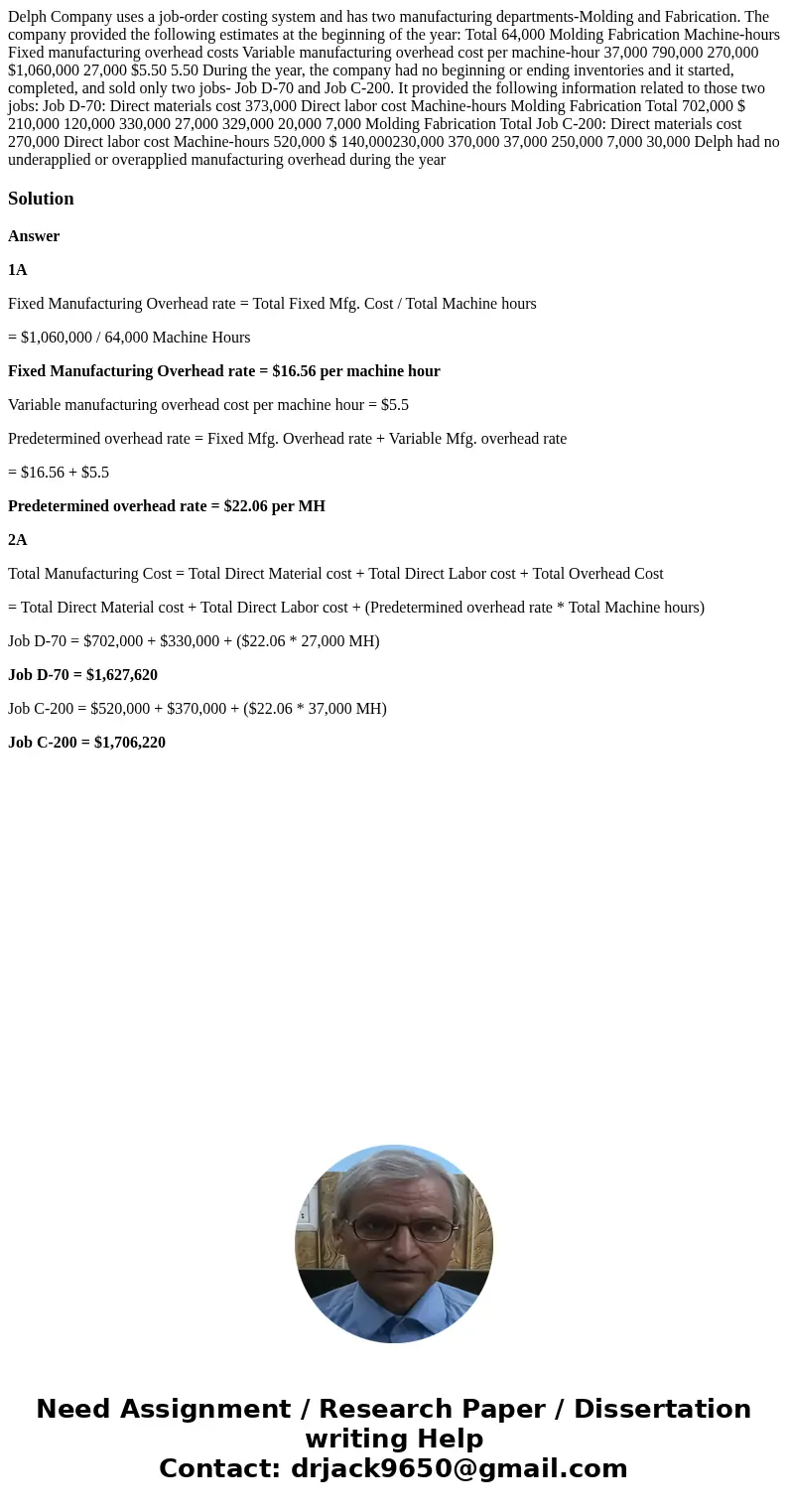Delph Company uses a joborder costing system and has two man
Delph Company uses a job-order costing system and has two manufacturing departments-Molding and Fabrication. The company provided the following estimates at the beginning of the year: Total 64,000 Molding Fabrication Machine-hours Fixed manufacturing overhead costs Variable manufacturing overhead cost per machine-hour 37,000 790,000 270,000 $1,060,000 27,000 $5.50 5.50 During the year, the company had no beginning or ending inventories and it started, completed, and sold only two jobs- Job D-70 and Job C-200. It provided the following information related to those two jobs: Job D-70: Direct materials cost 373,000 Direct labor cost Machine-hours Molding Fabrication Total 702,000 $ 210,000 120,000 330,000 27,000 329,000 20,000 7,000 Molding Fabrication Total Job C-200: Direct materials cost 270,000 Direct labor cost Machine-hours 520,000 $ 140,000230,000 370,000 37,000 250,000 7,000 30,000 Delph had no underapplied or overapplied manufacturing overhead during the year 
Solution
Answer
1A
Fixed Manufacturing Overhead rate = Total Fixed Mfg. Cost / Total Machine hours
= $1,060,000 / 64,000 Machine Hours
Fixed Manufacturing Overhead rate = $16.56 per machine hour
Variable manufacturing overhead cost per machine hour = $5.5
Predetermined overhead rate = Fixed Mfg. Overhead rate + Variable Mfg. overhead rate
= $16.56 + $5.5
Predetermined overhead rate = $22.06 per MH
2A
Total Manufacturing Cost = Total Direct Material cost + Total Direct Labor cost + Total Overhead Cost
= Total Direct Material cost + Total Direct Labor cost + (Predetermined overhead rate * Total Machine hours)
Job D-70 = $702,000 + $330,000 + ($22.06 * 27,000 MH)
Job D-70 = $1,627,620
Job C-200 = $520,000 + $370,000 + ($22.06 * 37,000 MH)
Job C-200 = $1,706,220

 Homework Sourse
Homework Sourse